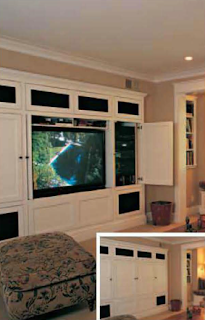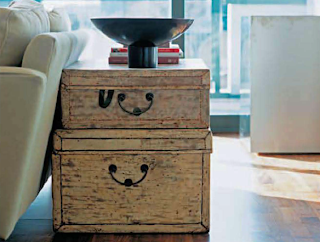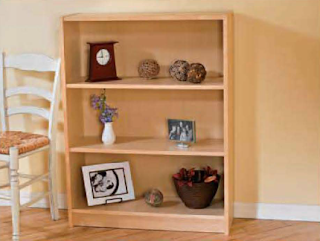Because the common living areas are the most public rooms in the house, it is especially
important that storage strategies here strike a balance between convenience and appearance. Convenience comes from having your things close to where you use them. Appearance is subject to your taste, of course, but also to your priorities: do you prefer the rooms to be clutter-free at all times, or are you comfortable with a more lived-in look? In general, can you put things away easily when it's time to clean up?
Another balancing act required for most living areas is the allocation of space for accommodating storage items vs. display items. Some useful things, such as books, lend themselves to both storage and display because they look good enough to be kept out in the open. Other stuff is best stored behind closed doors.
Finally, organizing your living spaces wouldn't be complete without some attention paid to entryways and connecting spaces. A good plan in high-traffic areas creates a welcome
greeting to visitors, making them feel at home the moment they walk through the door.
Living room , family room, TV room, rumpus room-whatever you call your favorite hangouts, the storage strategy is pretty straightforward: satisfy every activity that takes place there while keeping clutter to a minimum. In most homes, this is accomplished with thoughtful room arrangement and careful selection and use of furniture and shelving.
Living Rooms & Family Rooms:
In homes with more than one main living space, the living room tends to be centered around social gatherings and quiet family leisure activities. The furniture and layout are geared toward conversation, reading, or relaxing in front of the fireplace . Likewise, storage and display in the living room should reflect these themes of social interaction and hospitality while keeping personal items out of sight.
By contrast, the family room, or TV room, is often dominated by the television and media entertainment.
It's also the usual place for kids' play areas and adjunct work zones such as a hobby table or home office tucked into a corner. Convenience and function are the reigning themes here, and it's often best to set up distinct activity zones so everyone can do their own thing at the same time.
If your home has only one main living space to support all of its leisure activities, a zoned arrangement can be most effective, as well as storage pieces that are adaptable for both casual family time and entertaining with guests.
The secret to accommodating storage needs in any living space is to substitute conventional furniture and accessories with pieces that do double duty: instead of a traditional sofa table behind the couch, use a long console unit with attractive doors and/or open shelving. Replace end tables and accent tables with credenzas. Prevent coffee table clutter by swapping your four-legged model with a boxy unit with integrated storage spaces. Even an ottoman can lend a hand if it has a lid and a hidden storage compartment inside.
Shelving & Bookcase Basics:
Shelves and bookcases are the storage workhorses of most living areas, filling odd spaces, defining zones in open-plan rooms, adding color and warmth to empty wall surfaces, and more. Here are some tips for making them work for your storage strategy:
• Use bookcases or banks of shelving as architectural details. For example, two cases
meeting at an inside corner create a cozy reading nook; matching cases flanking a couch, sitting area, or bank of windows provide visual balance and help define the intermediate space; a continuous perimeter shelf running close to the ceiling adds a decorative effect similar to a cornice.
• Build custom shelves to fill nooks and oddly shaped wall s.
• Arrange books for visual appeal (not just straight-up by size); lay some flat or at an angle; leave a little breathing room by not overcrowding the she lves; intersperse display items if desired.
• Conceal paperwork, old magazines, and other less-decorative material inside attractive file boxes or bins; use matching containers to prevent a cluttered look.
• Include some room for expanding your collection when buying or building new shelving.




Enregistrer un commentaire